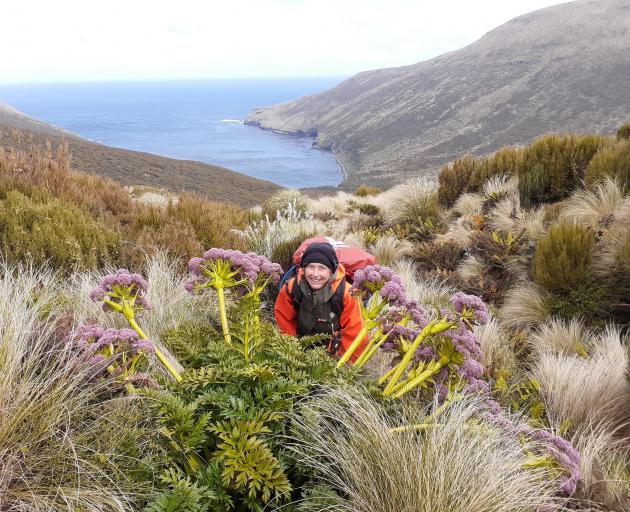
Any spare moment she got during a 10-week stint counting southern royal albatrosses for the Department of Conservation last summer, she grabbed her sketchbook and scribbled as fast as she could — "15 minutes max", she said.
There were never any days off from the census and not a lot of downtime from jobs such as observing and counting birds’ nests, setting up cameras and fitting transmitters and bands on some of the birds.
Then there were also camps to be set up, potatoes to be peeled and dishes to do.
"My sketch books are my diary of the landscape, in pen and watercolour. They were very, very fast sketches.
"I couldn’t take a day off to do it and most were scribbled off back at base ... We did long days and I often just didn’t have the energy.
"There was not a lot of fuss, just instinctive, raw, my reaction to the environment," she said.
The isolated Campbell Island group is wet, wild, windy and cold.

It rains 325 days a year. There are just 650 sunshine hours a year — less than an hour during a 215 day-long winter — and the temperature rarely rises more than about 12°C.
She volunteered to work in remote places for Doc many times in the last two decades, so leapt at the chance to repeat voluntary work she first did at the subantarctic reserve 16 years ago.
"It is somewhere far, far away and really, really cold. But they are amazing jewels of reserves, managed by Doc, fields full of mega herbs and flowers and the sky is full of 3m-wing span albatrosses. An extraordinary place," she said.
The Campbell Islands have a whaling, sealing and farming history and are closed to the public.
Wickes was there from November last year until February, "a really long time away from family".
There are six species of albatross in residence at the Campbell Islands, including the largest albatross: the southern royal, which is listed as vulnerable.

Previous records had estimated about 8500 bird pairs were breeding on the island, but Ms Wickes said this had worryingly declined.
Nest counts for southern royal albatross showed an overall decline of 32.8% since the 1990s and a 26.5% decline since the 2000s, a report said.
Ms Wickes wants to raise awareness of this key finding about the giant sea-faring bird’s population decline.
"The fishing around the island has never been better, so something is happening [to the birds] at sea."
The team placed 35 trackers on southern royal albatross in one of the Campbell Island study areas and flew to all points of the compass.
marjorie.cook@alliedpress.co.nz












